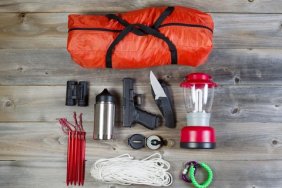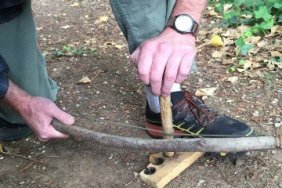 Making sure your bike size is right for you is important, safety-wise and comfort-wise. In Part One of this series, we explored some of the factors that play into this, as well as the reasons for their importance. Today we’ll continue by looking at how to find the right fit for mountain and commuter bikes, as well as how to adjust your fit when it’s needed.
Making sure your bike size is right for you is important, safety-wise and comfort-wise. In Part One of this series, we explored some of the factors that play into this, as well as the reasons for their importance. Today we’ll continue by looking at how to find the right fit for mountain and commuter bikes, as well as how to adjust your fit when it’s needed.
One of the most important, if not the most important, things to look at when you’re fitting a bike is the distance from the center of the top tube to the ground, also known as the stand-over height. This should be between two and five inches less than your inseam. Some aggressive mountain bike enthusiasts like four to five inches between a bike’s stand-over height and their inseam length. Commuters, though, only need about two inches of clearance. If you know your road bike size, you can quickly determine your mountain bike size by subtracting about 4 inches from your ideal road bike’s frame size.
Because mountain bike seats can be raised or lowered easily and the rider almost always remains in an upright position, the length of a mountain bike’s top tube is just as important as its frame size. If the top tube is too long, it will be difficult to keep your weight over the rear wheel when riding uphill. One way to roughly measure the tube length you need is to add your torso and arm length, divide that number by two, and then subtract five inches. This will give you a good length to go on, plus or minus an inch.
Once you pick up your new bike, you may have to make adjustments to fine-tune its fit, such as the saddle or handlebars. A correct saddle height will be easier on your knees and allow for a more powerful downstroke. Adjust your saddle height so you nearly extend your leg fully with every pedal, with only a slight bend in the knee at the bottom of each pedal stroke. You can also adjust the saddle’s tilt to be more comfortable, but this is really based on personal preference.
Handlebars are another component that can be altered, and they come in a variety of widths and configurations. If you do want to exchange the stock handlebars for new ones, I’d go with bars that are the same width as your shoulder joints. Narrower bars like the ones found on road bikes, offer a more aerodynamic ride, while wider ones consistent with mountain bikes make for easier breathing and added leverage. If you find that your back is sore or cramped after riding, you may need to raise the handlebars.
Anything other than basic adjustments will require a qualified bike technician, which you’ll find at your local bike shop. Most people will walk into a big box department store and grab a bike off the rack without taking a few moments to make sure it fits. To be fair, though, the average person doesn’t know how to measure their fit. A properly fit bike will make a huge different during and after a ride, though. Hopefully, this mini-guide has helped better prepare you for your next bike purchase!








